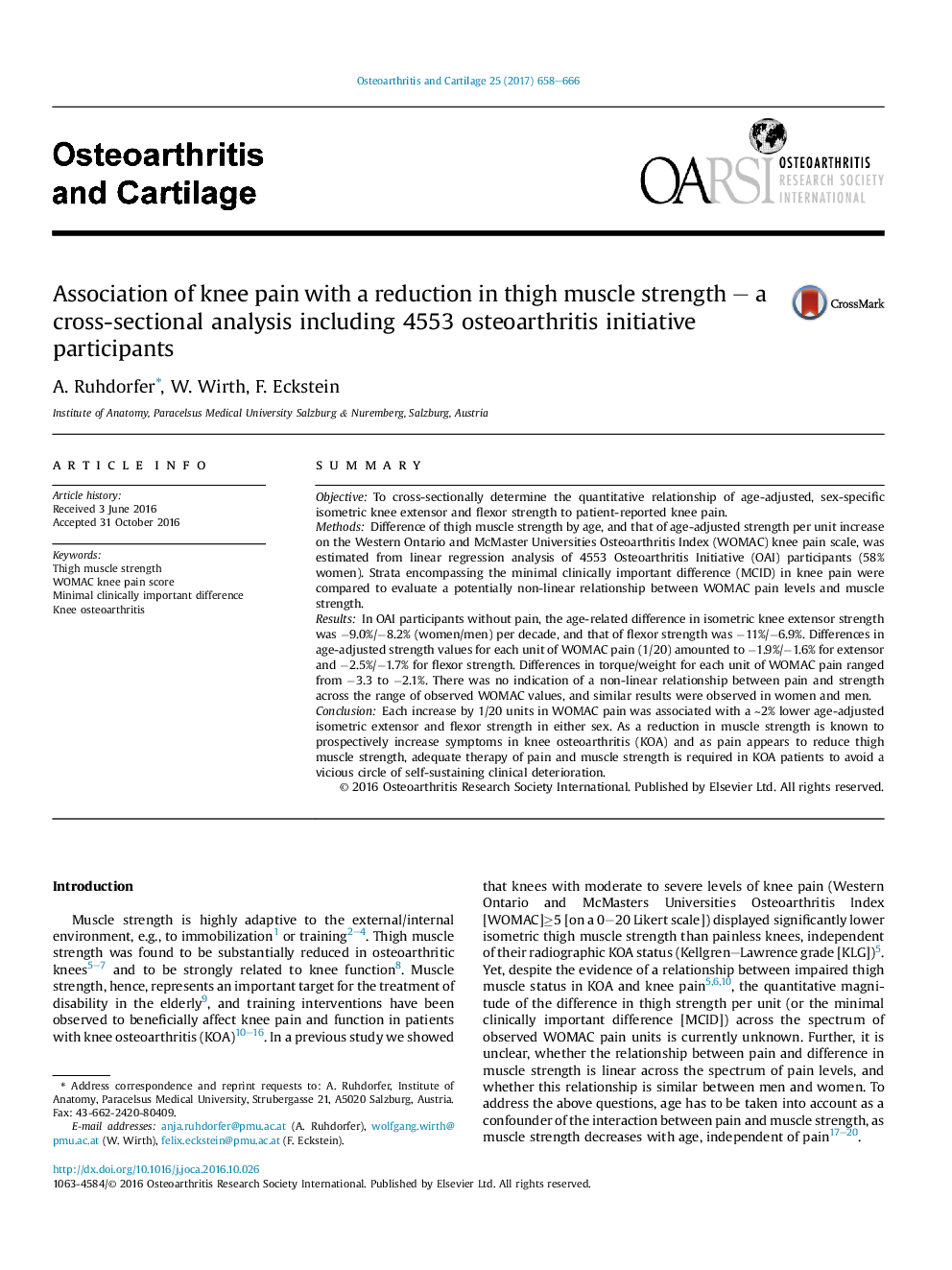| کد مقاله | کد نشریه | سال انتشار | مقاله انگلیسی | نسخه تمام متن |
|---|---|---|---|---|
| 5669430 | 1407966 | 2017 | 9 صفحه PDF | دانلود رایگان |

SummaryObjectiveTo cross-sectionally determine the quantitative relationship of age-adjusted, sex-specific isometric knee extensor and flexor strength to patient-reported knee pain.MethodsDifference of thigh muscle strength by age, and that of age-adjusted strength per unit increase on the Western Ontario and McMaster Universities Osteoarthritis Index (WOMAC) knee pain scale, was estimated from linear regression analysis of 4553 Osteoarthritis Initiative (OAI) participants (58% women). Strata encompassing the minimal clinically important difference (MCID) in knee pain were compared to evaluate a potentially non-linear relationship between WOMAC pain levels and muscle strength.ResultsIn OAI participants without pain, the age-related difference in isometric knee extensor strength was â9.0%/â8.2% (women/men) per decade, and that of flexor strength was â11%/â6.9%. Differences in age-adjusted strength values for each unit of WOMAC pain (1/20) amounted to â1.9%/â1.6% for extensor and â2.5%/â1.7% for flexor strength. Differences in torque/weight for each unit of WOMAC pain ranged from â3.3 to â2.1%. There was no indication of a non-linear relationship between pain and strength across the range of observed WOMAC values, and similar results were observed in women and men.ConclusionEach increase by 1/20 units in WOMAC pain was associated with a â¼2% lower age-adjusted isometric extensor and flexor strength in either sex. As a reduction in muscle strength is known to prospectively increase symptoms in knee osteoarthritis (KOA) and as pain appears to reduce thigh muscle strength, adequate therapy of pain and muscle strength is required in KOA patients to avoid a vicious circle of self-sustaining clinical deterioration.
Journal: Osteoarthritis and Cartilage - Volume 25, Issue 5, May 2017, Pages 658-666